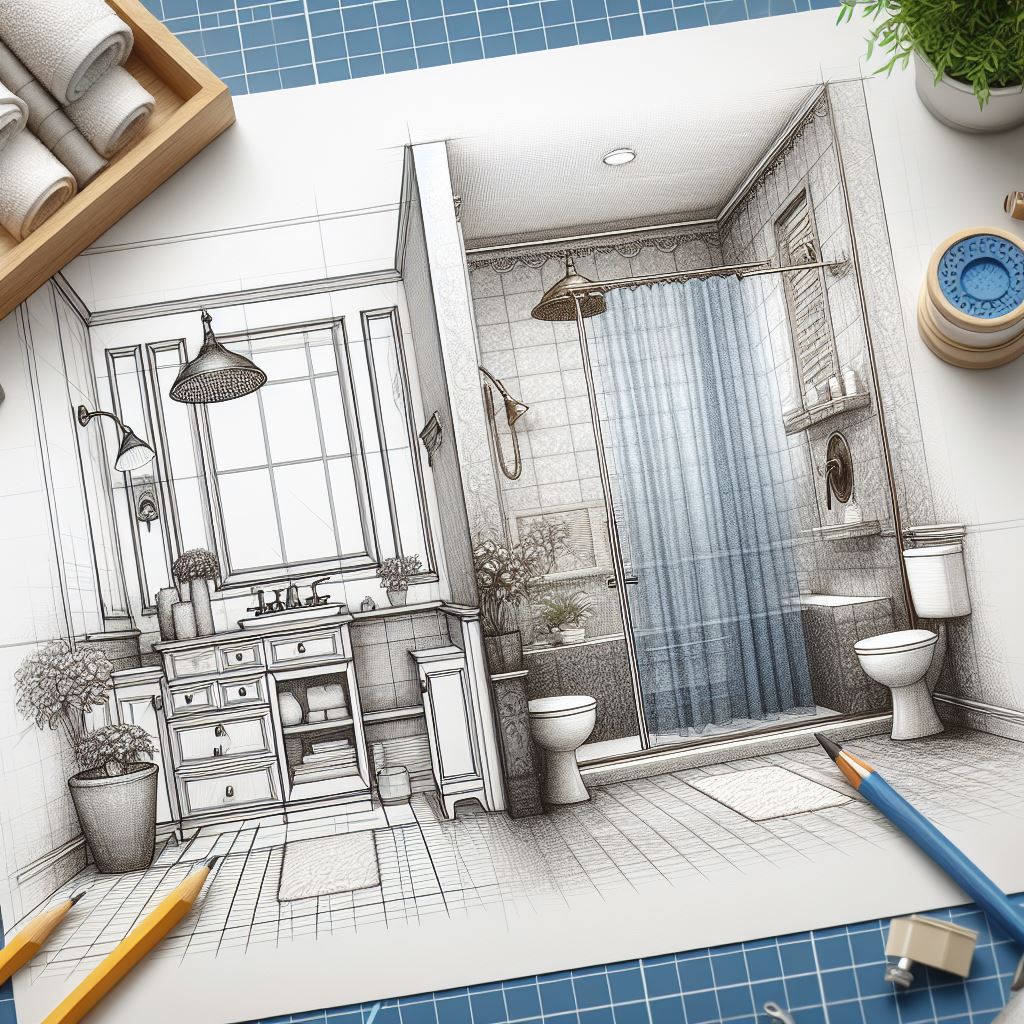DIY, Interior Design
Where Should Shower The Drain Be Placed
Where Should the Shower Drain Be Placed
The placement of a shower drain might seem like a trivial detail in bathroom design, but it plays a crucial role in ensuring effective drainage and preventing water-related issues. This article will explore the various aspects of where a shower drain should be placed, considering factors like layout, design, and technological advancements.
Understanding Drainage Basics
Before delving into the intricacies of shower drain placement, let’s establish a basic understanding of drainage. A proper drainage system is essential in any shower to prevent water pooling, which can lead to mold, mildew, and structural damage over time. The goal is to channel water away from the shower area efficiently.
Factors Influencing Shower Drain Placement
Several factors influence the optimal placement of a shower drain. The layout and design of the bathroom, as well as plumbing and construction constraints, must be taken into account. A well-thought-out placement ensures not only functionality but also aesthetic appeal.
Common Shower Drain Locations
Shower drains are typically found in different locations within a shower space, such as the center, corner, or along the walls. Each location has its advantages and disadvantages, affecting the shower’s design and functionality.
Optimal Shower Drain Placement
The optimal placement of a shower drain is crucial for efficient drainage. Factors like the slope of the floor, the type of drain used, and the size of the bathroom contribute to finding the perfect location. Proper planning can prevent water accumulation and potential damage.
Floor Slope and Its Role
Achieving the right floor slope is paramount in facilitating water flow towards the drain. A too steep or shallow slope can lead to drainage issues. Homeowners should be aware of this factor when planning their shower space.
Center vs. Corner Drain Placement
Choosing between a center or corner drain depends on the bathroom layout and personal preferences. Center drains offer a sleek look, while corner drains may be more practical for smaller bathrooms. Understanding the pros and cons is essential for making an informed decision.
Linear Drains: A Modern Choice
Linear drains have gained popularity for their contemporary aesthetics and efficient water drainage. These long, narrow drains along the shower perimeter offer a sleek alternative to traditional center or corner drains. Homeowners should consider the advantages and potential challenges before opting for a linear drain.
DIY Tips for Shower Drain Placement
A few tips can be immensely helpful for the adventurous homeowner looking to tackle shower drain placement as a DIY project. From proper measurements to selecting the right tools, taking precautions is essential for a successful installation or relocation.
Consulting a Professional
While some may opt for a DIY approach, there are instances where consulting a professional is highly recommended. Complex plumbing systems or unique bathroom layouts may require the expertise of a plumber or contractor to ensure a seamless and watertight installation.
Preventing Common Issues
Improper shower drain placement can lead to various issues, including water seepage, mold growth, and structural damage. Regular maintenance and awareness of potential problems can help homeowners avoid costly repairs down the line.
Innovations in Shower Drain Technology
Advancements in shower drain technology have introduced features like anti-clog systems, integrated lighting, and customizable designs. Staying informed about these innovations can add both functionality and style to your bathroom.
Environmental Considerations
For those environmentally conscious individuals, choosing eco-friendly options for shower drain placement is a positive step towards water conservation. Sustainable choices not only benefit the planet but can also contribute to long-term savings on water bills.
Case Studies: Successful Shower Drain Installations
Examining real-life examples of successful shower drain placements can provide valuable insights. These case studies showcase the application of different drain types in various bathroom settings, offering inspiration and lessons learned.
The placement of a shower drain is a crucial element in bathroom design that requires careful consideration. From the basics of drainage to innovative technologies and eco-friendly options, homeowners have a range of choices to ensure an effective and aesthetically pleasing shower space.
FAQs
- Can I relocate a shower drain on my own?
- While it’s possible for some DIY enthusiasts, consulting a professional for complex installations is advisable.
- What is the advantage of linear drains over traditional ones?
- Linear drains offer a sleek look and efficient water drainage along the shower perimeter.
- How often should I perform maintenance on my shower drain?
- Regular inspections and cleaning are recommended to prevent potential issues.
- Are there any eco-friendly options for shower drains?
- Yes, there are eco-friendly options that contribute to water conservation.
- Can a center drain work well in a small bathroom?
- Depending on the layout, a center drain can be a stylish and functional choice for smaller bathrooms.

